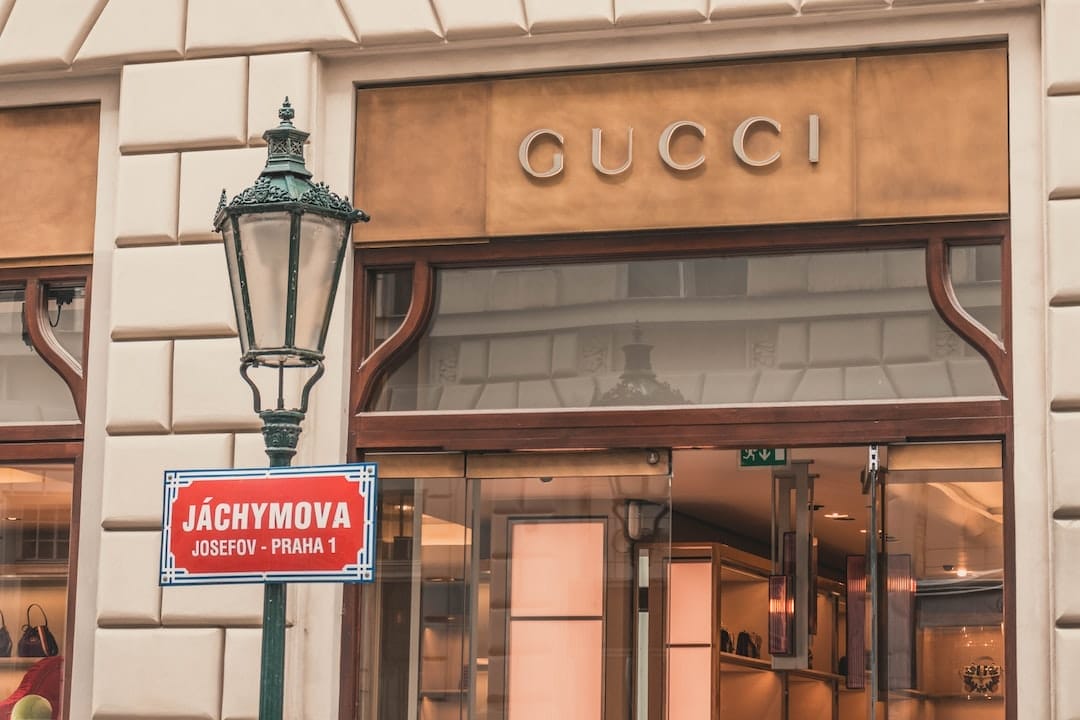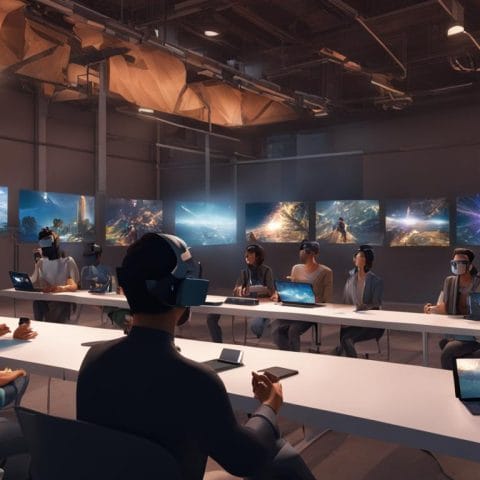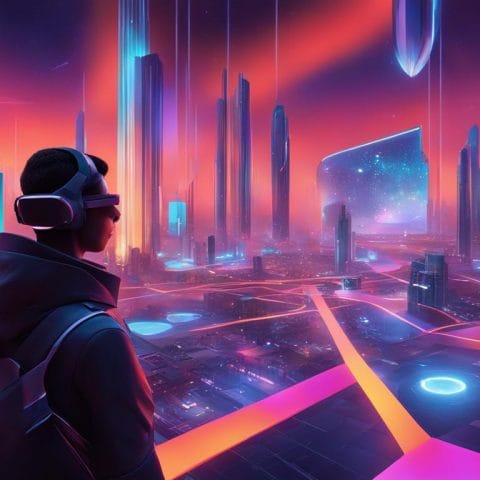The metaverse is the future of business and marketing, with companies across all industries beginning to explore its possibilities. But what are the best ways for leading brands to strategize for this new digital world? From luxury labels attempting to participate in the metaverse, to Wendy’s officially entering it – there are a variety of metaverse examples brands can learn from.
This blog post outlines how businesses can leverage their presence in the metaverse and provide some successful marketing examples that other companies have utilized. Learn more about how you can make your mark on the ever-evolving virtual landscape and get ahead of your competitors by understanding these essential tips and tricks when navigating through metaverses.
Table of Contents:
- Luxury Brands and the Metaverse
- Examples of Companies Using The Metaverse For Marketing
- Best Practices For Successful Marketing In The Metaverse
- FAQs about Metaverse Examples Brands
- Conclusion
Luxury Brands and the Metaverse
Luxury brands are increasingly looking to the metaverse to reach new customers and build brand loyalty. The metaverse offers an immersive experience that allows luxury brands to create engaging experiences for their customers, from virtual shopping trips to exclusive events. It’s every brand’s dream to acquire a highly customizable, cloud-based content collaboration platform to help the team work jointly, and more smartly while remotely working. hyperspace is precisely what every brand needs. However, there are several challenges luxury brands face when entering this space.

Why Luxury Brands are Attempting to Participate in the Metaverse:
Luxury brands recognize the potential of the metaverse for creating unique customer experiences and connecting with their target audience on a deeper level than traditional marketing channels can offer. From metaverse examples brands, it’s evident that metaverse provides access to a global market of potential customers who may not be able or willing to travel physically but still want access to high-end products and services.
Challenges Faced by Luxury Brands in Entering the Metaverse:
One challenge luxury brands face is finding ways to differentiate themselves from competitors within this expansive digital environment. Additionally, they must find ways of conveying their brand identity without relying on physical cues like packaging or store design which could otherwise help them stand out from other companies offering similar products or services. Furthermore, since many users of these platforms may have limited knowledge about luxury goods, these companies need to ensure that any content created is accessible and accurately reflects their brand values and image.
Luxury brands are beginning to recognize the potential of the metaverse and its ability to create immersive experiences for customers. In the next section, we will explore examples of companies that have successfully leveraged the metaverse for marketing purposes.
Key Takeaway: Luxury brands are entering the metaverse to reach new customers and build brand loyalty, but they must be aware of the challenges that come with it. These include: differentiating themselves from competitors, conveying their brand identity without physical cues, and ensuring content is accessible yet accurately reflects their values. Luxury brands are attempting to participate in the metaverse to reach new customers and build brand loyalty, but face challenges such as differentiating themselves from competitors and conveying their brand identity without physical cues.
Examples of Companies Using The Metaverse For Marketing
Wendy’s Has Officially Entered The Metaverse. Here’s How: Wendy’s, the popular fast-food chain, recently announced its official entry into the metaverse. To mark this occasion, they launched a virtual restaurant in Roblox that allows players to order food and customize their avatars with exclusive Wendy’s items. This is an example of how companies can use the metaverse for marketing purposes by creating engaging experiences that allow customers to interact with their brand uniquely.
Nike’s “The Last Game” Campaign In The Virtual World Of Fortnite: Nike created an immersive experience within Fortnite for its “The Last Game” campaign. Players explored different game levels while wearing custom Nike gear and interacting with characters from the campaign. This was an effective way for Nike to reach new audiences through a platform they already know and love.
Adidas’ Virtual Stadium Experience In Minecraft:
Adidas used Minecraft as part of its “Create Your Own Stadium” campaign which allowed users to build their virtual stadiums using Adidas-provided blocks. Participants could then share their creations on social media and be entered into a competition where one lucky winner would have their stadium featured at an actual Adidas event. This was another fantastic example of how brands can leverage existing platforms like Minecraft to create unique experiences that engage customers in innovative ways.
Wendy’s Has Officially Entered The Metaverse: Wendy’s, the popular fast-food chain, recently made its official entry into the metaverse. To promote their new menu item, they created a virtual world in Roblox where players could explore and interact with 3D versions of their restaurants. Players customized their avatars with Wendy’s merchandise like t-shirts and hats. This campaign was successful in engaging users and driving sales for Wendy’s.
Nike’s “The Last Game” Campaign In The Virtual World Of Fortnite: Nike launched an ambitious marketing campaign within the popular video game Fortnite called “The Last Game” which featured a battle between two teams of characters wearing Nike apparel. During this event, players were encouraged to purchase exclusive Nike items from the in-game store while participating in challenges that rewarded them with additional rewards such as XP boosts or exclusive skins.
This campaign successfully drove engagement among gamers who may not have been familiar with Nike before but became interested after experiencing this unique marketing effort within Fortnite.
Adidas took things one step further by creating an entire virtual stadium experience inside of Minecraft for its fans to enjoy during major sporting events like the FIFA World Cup or UEFA Champions League matches. Players could join together online to watch live matches on giant screens placed throughout the stadium while interacting with each other through chat features and customizing their avatars using Adidas gear available from various vendors sitting around the stadium grounds.
This immersive experience allowed Adidas to reach out directly to its target audience and create a memorable brand experience that resonated well beyond just watching sports on TV or playing video games alone at home.
From Wendy’s to Nike and Adidas, companies are leveraging the metaverse for marketing purposes. To ensure success in this new space, it is important to understand best practices like understanding your audience and creating unique experiences.
Key Takeaway: Brands are using the metaverse to create immersive and engaging experiences for customers. Examples include Wendy’s virtual restaurant in Roblox, Nike’s “The Last Game” campaign in Fortnite, and Adidas’ virtual stadium experience in Minecraft.
Brands are taking their marketing campaigns to the metaverse. Check out how Wendy’s, Nike & Adidas have used virtual worlds like Roblox, Fortnite & Minecraft for immersive experiences. #MetaverseMarketing #VirtualWorldsClick to Tweet
Best Practices For Successful Marketing In The Metaverse
Marketing in the metaverse is an exciting and powerful way for businesses to reach their customers. Its immersive, interactive capabilities enable brands to create unique experiences that can engage users on a deeper level than traditional marketing methods. To ensure success in this new medium, certain best practices should be followed.
Understanding Your Audience and Their Needs:
The key to successful marketing in the metaverse is understanding your target audience and what they want from your virtual experience. Knowing who you’re targeting will help you craft content specifically tailored to them and ensure that it resonates with them emotionally. It’s also key to understand how they interact with the metaverse so you can design experiences that meet their needs while still being engaging and entertaining.

Creating Unique and Engaging Experiences:
Once you know your audience, it’s time to start creating content for them. When designing experiences for the metaverse, focus on creating something unique that stands out from other brands or products available within the platform. Think about ways of using visuals or sound effects to draw people into your world and provide meaningful interactions between users like puzzles or games which encourage exploration of different areas within your space.
If you already have existing assets such as images or videos which could be used within the metaverse, then use these wisely when building out worlds; this could save time compared to having to create everything from scratch. Additionally, consider ways of incorporating physical elements into virtual spaces. If possible, link up real-world events with those taking place inside a virtual environment by streaming live video feeds directly into game worlds or allowing players access exclusive rewards based on activities outside of the game itself, such as attending concerts.
Key Takeaway: To create successful marketing campaigns in the metaverse, it’s important to understand your audience and craft unique experiences tailored to them. This can include using existing assets, incorporating physical elements into virtual spaces, and linking up real-world events with those happening inside a virtual environment.
FAQs concerning Metaverse Examples Brands
What brands are on metaverse?
Currently, there are a variety of brands that have embraced the metaverse. These include tech giants such as Microsoft, Google, and Apple; entertainment companies like Disney and Warner Bros.; automotive manufacturers like Tesla; fashion labels such as Gucci and Louis Vuitton; financial institutions including JP Morgan Chase and Bank of America; media outlets including CNN and The New York Times; gaming platforms such as Roblox and Fortnite; educational organizations like Harvard University; e-commerce sites like Amazon, eBay, Etsy, Shopify, etc.; travel providers such as Airbnb and Booking.com; social networks including Facebook, Twitter, Instagram etc., plus many more. With Hyperspace’s no-code platform firms can readily join this growing brand list on the metaverse.
What is a popular metaverse example?
One of the most common metaverse examples is Second Life, a virtual world created by Linden Lab in 2003. It allows users to create avatars and explore 3D environments, interact with other players, participate in activities such as shopping or gaming, and even build their virtual businesses. Second Life has become a vital platform for socializing, networking, education and entertainment. It also serves as a hub for creative projects like art galleries or music festivals that bring people together globally.
How many brands are on metaverse?
Presently, there is no definitive answer to this question as the metaverse is still in its early stages of development. However, it is estimated that hundreds of brands have already begun exploring and experimenting with the potential of virtual worlds for their businesses. This includes companies from a variety of industries like gaming, entertainment, retail, finance, healthcare and more. As technology continues to evolve and become more accessible to businesses worldwide, we can expect even more brands to join the metaverse in 2023 and beyond.
Is Gucci in the metaverse?
Taking the crown as one of the earliest metaverse movers, Gucci has embarked on a number of initiatives that have propelled the Italian luxury brand into new fashion heights. The metaverse is a virtual world that exists beyond the physical realm and can be accessed through various technologies such as augmented reality, virtual reality, and 3D simulations. It gives users an immersive experience where they can interact with others in real-time. While some companies have just begun to explore opportunities within the metaverse, Gucci decided to jump in with both feet practically from the start.
Conclusion
In conclusion, a metaverse is a powerful tool for businesses to create immersive experiences and engage with their customers. Brands can strategize for the metaverse by understanding its capabilities and leveraging its innovation. Luxury brands are attempting to participate in the metaverse and, show that this technology is being adopted across industries. Companies like Wendy’s have successfully entered to become metaverse examples brands for other brands to do so too.
By following best practices like using compelling visuals, interactive elements, and engaging storytelling techniques, businesses can effectively use the metaverse to market their products or services. With all these factors taken into consideration, companies should be able to make an informed decision on whether or not they want to enter this new virtual world – one that has already proven itself through various successful marketing campaigns from different types of brands around the world.
Are you looking to make a splash in the virtual world?
Do you want to create an immersive experience that sets your business apart from the competition?
Hyperspace is here to help! With our no-code platform, we provide everything necessary for enterprises of any size or budget to build their custom metaverse.
If you feel that your brand is ready to “Futureproof” your Metaverse with this browser-based platform which enables easy access on all laptops, tablets, smartphones, and VR/AR headsets, without the need to download or install the software.
Our intuitive drag-and-drop interface makes it easy for anyone – even those without coding knowledge – to design stunning 3D environments with customizable templates perfect for training, marketing campaigns, and more.
Get ready to take your brand into hyperspace today!





